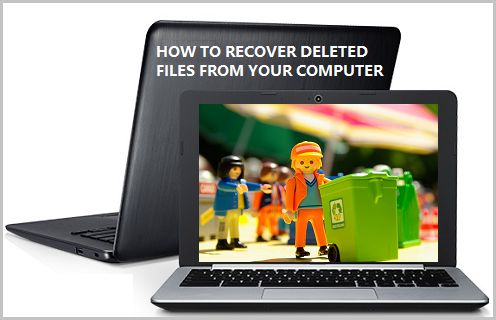What Makes it Possible to Recover Deleted Files
You may be surprised to know that the files which you have just deleted and also cleared from the computers recycle bin might still be available somewhere on your hard drive. When you delete a file, your computer does not actually delete the file’s data. It just removes the file information from the Master File Table (similar to table of content in a book) and marks the sectors containing the deleted file’s data as available for over-writing by any new programs and files.
Source: ntfs.com In case you are thinking why your computer behaves in this way? It is easier and faster for the computer to mark the file’s MFT entry as deleted, compared to actually overwriting the File’s data which could take several minutes, making the computer appear painfully slow and sluggish.
How to Improve Chances of Recovering Deleted Files
While your deleted file might still be available somewhere on the computer’s hard drive, recovering a deleted file is not that simple. The location of the deleted file on the computer’s hard drive is no longer protected by the file system. Hence, those very locations might be overwritten anytime the computer’s OS creates a new file.
- In order to improve your chances of recovering deleted files, you need to immediately stop working on the affected computer. Even the act of browsing a single Website can download multiple temporary files to the local hard drive which might end up overwriting your deleted file.
- Try to recover the file as soon as possible. This is because any delay in recovering the deleted file increases the chances of it being overwritten by some other file or program.
- Your computer creates files all the time. Even booting and running Windows from the affected drive can overwrite the areas on the hard drive containing your deleted files.
- You need to be aware about the possibility of the deleted file being overwritten by any file recovery program that you may be thinking of downloading and installing on your computer.
- Your chances of recovering a deleted file are slimmer in case you had just created the file and deleted it a few minutes later. For example let us say that you created a small file at 6:30 pm and deleted it at 6:47 pm. There are very good chances of this recently created file being overwritten by the very first batch of files that your computer stores to the hard drive, including temporary files. This is because Windows assigns the lowest MFT entry it can find for a new file. Since, the MFT entry in the case of a recently created file (that you have also deleted) is a low number, Windows will reuse it as soon as a new file is created.
How to Recover Deleted Files
Microsoft Windows 10 program does not have any in-built tools that can scan the hard drive for deleted files and recover the deleted files. Hence, you will need to look for third-party file recovery programs that are designed for this task. While most file recovery programs are not free, ‘Recuva‘ pronounced as ‘Recover’ is a good file recovery program that is available in both free and paid versions. Recuva scans the MFT (Master File Table) for files marked as deleted. Since the MFT entry for a deleted file still provides valuable information – When the file was deleted, file size, where the file exists on the hard drive, file recovery programs like Recuva are able to provide a list of files that were deleted, and help you recover these files.
Recover Deleted Files Using Recuva Portable.
What makes Recuva an ideal program for file recovery is that it is portable. This means, it is possible to use the program for recovering deleted files without actually installing it on the hard drive. As mentioned above, downloading anything to the affected computer increases chances of your file being overwritten. Hence, find another computer that you can use and follow the steps below.
- Download Recuva Portable program (to another computer)
- Unzip the program to a flash drive.
- Plug the flash drive into the PC with the missing files
- Run Recuva from the flash drive and follow the instructions to find the missing file. Hope this helps you in recovering deleted files, next time try to get into the habit of backing up your hard drive or at least backup your important files.
